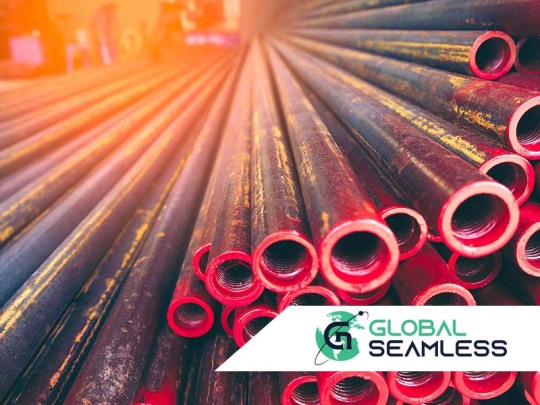Text
Stainless Steel Galvanization Process – How It Is?
Hot dip galvanizing is the process of dipping newly constructed steel into a kettle or a vat filled with liquid zinc. Compared to other corrosion protection techniques, this straightforward process has a benefit. When zinc is added to the kettle, the iron in the steel interacts with it to create an alloy layer that is strongly linked and helps the steel resist corrosion. This method, which has a patent attached to it, is utilized in virtually every significant application and sector that uses steel and iron. It is widespread around the world. Worldwide usage of this method has transformed the iron and steel industries, especially seamless steel pipes.
A brief about the hot dip galvanizing process
For a corrosion-resistant coating of iron, zinc alloy and zinc metal, the procedure requires submerging steel or iron in a bath of molten zinc. A metallurgical reaction occurs between the molten zinc and the steel's iron when the steel is submerged in the zinc for an extended period. The coating is generated perpendicular to all surfaces since this reaction is a diffusion process, resulting in a uniform thickness formed throughout the part. This procedure has been in use since 1794 and provides maintenance-free, durable, and corrosion protection for years at a fair price. Compared to other corrosion protection techniques, this straightforward process has other benefits.
Steps in hot dip galvanizing
Surface preparation, galvanizing, and post-treatment are the three primary processes in this procedure. The goal of surface preparation is to get rid of all the contaminants and oxides. This procedure is crucial because zinc does not react with dirty steel. To remove grease, grime, oil, etc., the steel is submerged in an acidic bath throughout this operation. Scale and oxides are then ground in a weak solution. The steel is then cleaned of all oxidation, which can form from pickling the steel, using a flux. Any form of oxidation is prevented by the protective layer the flux provides. Finally, the steel is thoroughly cleaned before being prepared for immersion in the zinc bath.
They provide the best surface preparation for seamless pipes, which is one of the critical elements in applying the zinc coating to the surface of the iron component and is necessary for the proper processing of the zinc coating. The galvanized kettle is heated to a temperature between 820 and 860 F and contains only pure zinc. The steel from the galvanizing kettle is withdrawn and given post-treatment to improve the galvanized coating after the iron and zinc diffusion reaction is finished.
REAL BENEFITS OF GALVANIZED STEEL
1. Lowest first cost - Compared to many other often specified protective coatings for steel, galvanizing is less expensive initially. (The cost of applying labor-intensive coatings like painting has increased much more than the cost of conducting manufacturing processes like galvanizing.)
2. Less maintenance/Lowest long-term cost - Galvanizing is virtually always cheaper in the long run, even when the initial cost is higher than that of other coatings (because it lasts longer and needs less maintenance). And when structures are situated in remote locations, when a plant closure or production interruption is involved, upkeep creates issues and raises expenses.
3. Long life - Galvanized coatings on common structural parts of seamless pipes have a lifespan of more than 50 years in the majority of rural settings and 20 to 25 years or more, even in harsh urban and coastal situations.
4. Reliability - Galvanizing is done by Australian/New Zealand Standard 4680, and minimal coating standards are followed. Coating performance and life are dependable and predictable.
5. Toughest coating - A galvanized coating offers exceptional resistance to mechanical damage during transit, erection, and service thanks to its distinctive metallurgical structure.
6. Automatic protection for damaged areas - Small sections of steel exposed due to damage are protected catholically or as a sacrifice by galvanized coatings, which corrode preferentially to steel. Small damaged areas, unlike organic coatings, do not require a touch-up.
7. Complete protection - A galvanized object is protected throughout, including nooks, corners, and difficult-to-reach places. After a structure or fabrication is finished for seamless pipes, no coating can offer the same level of protection.
8. Ease of inspection - Visual inspection makes it simple to assess galvanized coatings, and simple non-destructive thickness testing methods are available. During the galvanizing process, coatings that appear solid and continuous are solid and continuous.
9. Faster erection time. When you receive the galvanized steel, they are ready for use. There is no time required for surface preparation, inspection and painting. When the structure assembly is complete, this is ready for use immediately or for the construction age.

1 note
·
View note